A Black Start Recovery Strategy for a PV-Based Energy Storage Microgrid, Considering the State of Charge of Energy Storage
Abstract
1. Introduction
2. Topology of PV-Based Energy Storage Microgrid Black Start System
2.1. Topology of PV-Based Energy Storage Microgrid System
2.2. Main Steps Involved in Black Starting of PV-Based Energy Storage Microgrid
- (1)
- It is imperative that all loads in the PV-based energy storage microgrid are removed to ensure that the energy storage equipment is started in no-load environment.
- (2)
- The energy storage system within the power network is rigorously evaluated, with grid-forming energy storage systems exhibiting superior voltage support capabilities being prioritised as black start power sources.
- (3)
- The energy storage system supplies power to the busbar. Through a coordinated control strategy, the ESS maintains the bus voltage magnitude and frequency at their rated levels, ensuring a reliable synchronisation reference for distributed renewable energy sources.
- (4)
- The primary loads are initially connected with prioritised restoration of the critical load power supply. Subsequently, the photovoltaic system is commissioned to operate in MPPT mode.
- (5)
- The PV system and energy storage system jointly supply power for the auxiliary equipment, restore auxiliary machines, and expand the black start recovery surface.
3. PV-Based Energy Storage Microgrid Black Start Control Strategy
3.1. Photovoltaic System Control Strategy
3.2. Energy Storage System Control Strategy
3.2.1. Conventional Constant Power Control
3.2.2. Virtual Synchronous Generator Control
3.2.3. SOC Equalisation Control for Energy Storage Units
4. Coordinated Control Strategies Applicable to Black Starting of PV-Based Energy Storage Microgrids
4.1. Black Start Coordinated Control Strategy Considering SOC of Energy Storage Units
4.2. Coordinated Control of Black Start Active Power in PV-Based Energy Storage Microgrids
4.3. Coordinated Control of Black Start Reactive Power in PV-Based Energy Storage Microgrids
5. Simulation Verification
5.1. Parameter Setting
5.2. Simulation Analysis of PV-Based Energy Storage Microgrid Black Start
5.2.1. Simulation Analysis of Black Start in PV MPPT Mode
5.2.2. Simulation Analysis Under Coordinated Control of PV MPPT and Load Tracking
5.3. Discussion
- This study has mainly considered PV systems and energy storage systems. Future work could involve wind power systems in black starting. As the number of distributed generation systems increases, the coordinated control and stability of the systems will become more complex. Future research could focus on distributed generation system control algorithms and hierarchical control structures to ensure system stability.
- Although the proposed adaptive equalisation control of the SOC for energy storage achieves real-time equalisation of the SOC in simulation, the real-time optimisation of PID control parameters in dynamic environments is still a challenge.
- Future research could prioritise the simulation of black starting of PV-based energy storage microgrids, considering energy storage SOCs, on hardware platforms, in order to assess these microgrids’ real-world performance.
6. Conclusions
- To address frequency and voltage instability during black starts, this study employs a grid-forming VSG-controlled energy storage system as the black start power source, achieving stable system frequency and voltage regulation throughout the restoration process.
- The distributed energy storage unit designed in this paper adopts adaptive SOC non-deviation control, which can reasonably allocate loads according to its own state of charge, realising SOC equalisation among distributed energy storage units and avoiding black start failure due to storage SOC over-run in the black start process.
- The proposed coordinated MPPT–load tracking control strategy maximises PV output, while enabling load-following operation, preventing black start failures due to insufficient storage capacity and minimising charge cycles.
Author Contributions
Funding
Data Availability Statement
Acknowledgments
Conflicts of Interest
References
- Zhao, H.Y.; Lin, Z.; Ding, Y.; Liu, Y.; Sun, L.; Yan, Y. A Model Predictive Control Based Generator Start-Up Optimization Strategy for Restoration with Microgrids as Black-Start Resources. IEEE Trans. Power Syst. 2018, 33, 7189–7203. [Google Scholar] [CrossRef]
- Qiu, F.; Zhang, Y.; Yao, R.; Du, P. Power System Restoration with Renewable Participation. IEEE Trans. Sustain. Energy 2023, 14, 1112–1121. [Google Scholar] [CrossRef]
- Wang, X.B.; Ge, J.; Han, L.S. Thinking and practice of grid-based energy storage to support the construction of new power systems. Power Syst. Prot. Control 2023, 51, 172–179. [Google Scholar]
- Dang, H.P.; Villegas Pico, H.N. Blackstart and fault ride-through capability of DFIG-based wind turbines. IEEE Trans. Smart Grid 2023, 14, 2060–2074. [Google Scholar] [CrossRef]
- Qiu, F.; Wang, J.; Chen, C.; Tong, J. Optimal Black Start Resource Allocation. IEEE Trans. Power Syst. 2016, 31, 2493–2494. [Google Scholar] [CrossRef]
- Sun, W.; Liu, C.C.; Zhang, L. Optimal Generator Start-Up Strategy for Bulk Power System Restoration. IEEE Trans. Power Syst. 2011, 26, 1357–1366. [Google Scholar] [CrossRef]
- Pan, Z.; Zhang, Y. Aflexible black-start network partitioning strategy considering sub system recovery timebalance. Int. Trans. Electr. Energy Syst. 2015, 25, 1644–1656. [Google Scholar] [CrossRef]
- Zhou, X.; Chen, W.J.; Dai, J.F. Considering the balanced distribution of energy storage SOC, the black-start coordinated control strategy of optical storage microgrid. J. Shanghai Jiaotong Univ. 2023, 395, 1–22. [Google Scholar]
- Patsakis, G.; Rajan, D.; Aravena, I.; Rios, J.; Oren, S. Optimal Black Start Allocation for Power System Restoration. IEEE Trans. Power Syst. 2018, 33, 6766–6776. [Google Scholar] [CrossRef]
- Liu, Y.P.; Hou, Y.X.; Liang, H.P. A Coordinated Control Strategy for Photovoltaic and Energy Storage Hybrid Power Generation System Suitable for Black Start. Power Syst. Technol. 2017, 41, 2979–2986. [Google Scholar]
- Wang, D.X. Research on Frequency Support Method and Black Start Strategy of Grid-Based PMSG Wind Power System; North China Electric Power University: Beijing, China, 2023. [Google Scholar]
- Zhan, C.J.; Wu, H.; Wang, X.F. A review of the stability of the reticulated converter. Proc. CSEE 2023, 43, 2339–2359. [Google Scholar]
- Wang, X.F.; Blaabjerg, F. Harmonic stability in power electronic-based power systems: Concept, modeling, and analysis. IEEE Trans. Smart Grid 2019, 10, 2858–2870. [Google Scholar] [CrossRef]
- Wang, X.F.; Taul, M.G.; Wu, H. Grid-synchronization stability of converter-based resources: An overview. IEEE Open J. Ind. Appl. 2020, 1, 115–134. [Google Scholar] [CrossRef]
- Zhou, J.Z.; Ding, H.; Fan, S.T. Impact of short-circuit ratio and phase-locked-loop parameters on the small-signal behavior of a VSC-HVDC converter. IEEE Trans. Power Deliv. 2014, 29, 2287–2296. [Google Scholar] [CrossRef]
- Li, D.; Zhu, Q.; Lin, S.; Bian, X.Y. A Self-Adaptive Inertia and Damping Combination Control of VSG to Support Frequency Stability. IEEE Trans. Energy Convers. 2017, 32, 397–398. [Google Scholar] [CrossRef]
- Chen, S.; Sun, Y.; Hou, X.; Han, H.; Fu, S.; Su, M. Quantitative Parameters Design of VSG Oriented to Transient Synchronization Stability. IEEE Trans. Power Syst. 2023, 38, 4978–4981. [Google Scholar] [CrossRef]
- Shi, R.L.; Zhang, X.; Liu, F. Research on the black start scheme of isolated microgrid based on virtual synchronous generator. Acta Energiae Solaris Sin. 2017, 38, 2857–2864. [Google Scholar]
- Huang, Q.Q.; Wang, W.; Deng, X.J. Research on the control strategy of grid-based photovoltaic self-synchronous voltage source. Power Electron. Technol. 2023, 57, 87–90. [Google Scholar]
- Shahparasti, M.M.; Laaksonen, H.; Kauhaniemi, K.; Lauttamus, P.; Strandberg, S.; Strandberg, J. Inrush Current Management During Medium Voltage Microgrid Black Start With Battery Energy Storage System. IEEE Access 2022, 10, 42287–42296. [Google Scholar] [CrossRef]
- Tobías, A.; Cárdenas, V.; Garcia-Beltran, C.D.; Miranda, H.; Álvarez-Salas, R. Optimal Power Sharing and Black Start Procedure in Photovoltaic Energy-Based Microgrids. IEEE Access 2023, 11, 74614–74626. [Google Scholar] [CrossRef]
- Zhao, Y.X.; Sun, L.; Lin, Z.Z. Microgrid as a black-start power source power grid reconstruction and optimization strategy. Autom. Electr. Syst. 2018, 42, 9–17+147. [Google Scholar]
- Zhang, Y.M.; Wu, J.Y.; Jiang, Q. Black start technology and coordinated recovery strategy of the receiver power grid based on the combined wind-storage system. Adv. Eng. Sci. 2023, 55, 72–83. [Google Scholar]
- Xie, N.; Yang, P.H.; He, P. Research on energy storage control strategy in the whole process of wind-solar storage microgrid-thermal power unit black start. Proc. CSU-EPSA 2023, 35, 75–82+93. [Google Scholar]
- Xiong, C.; Zhang, X.H.; Cao, W. Study on the limitation of VSG inertia under symmetrical fault of power grid and its combined effect with condenser. Power Energy 2020, 41, 9–12. [Google Scholar]
- Li, J.H.; You, H.F.; Qi, J. Stratified optimization strategy used for restoration with photovoltaic-battery energy storage systems as black-start resources. IEEE Access 2019, 7, 127339–127352. [Google Scholar] [CrossRef]
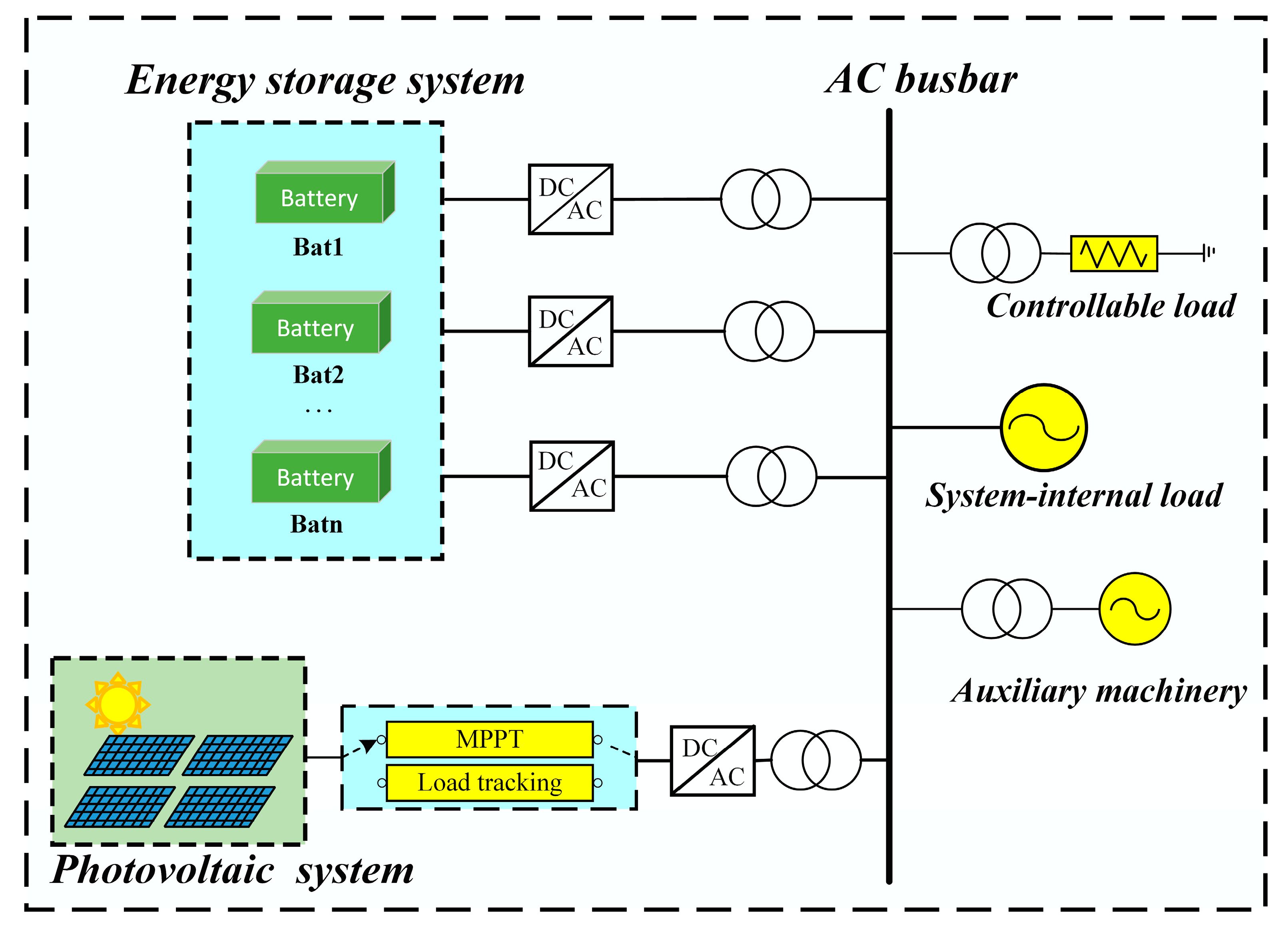
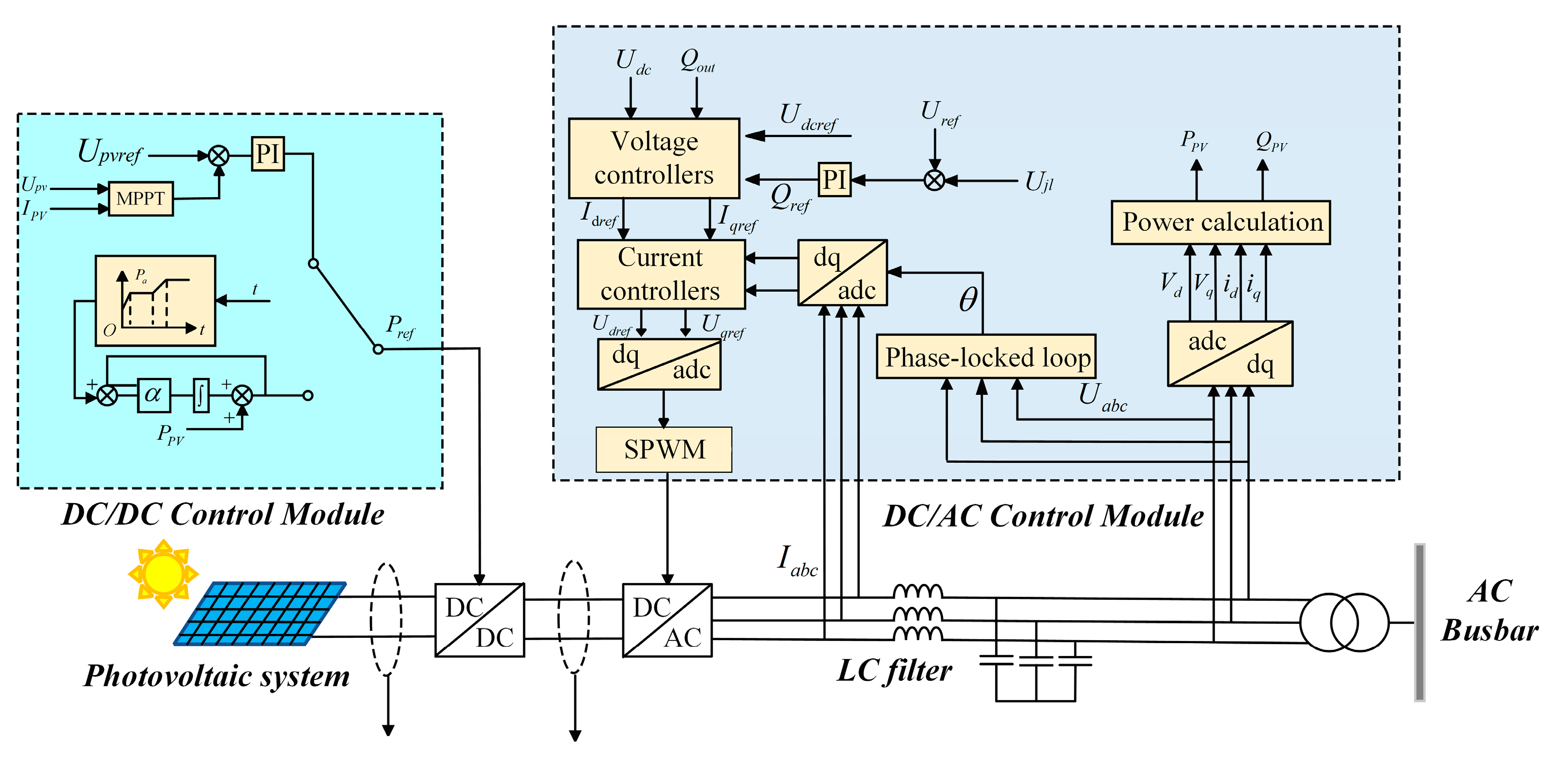
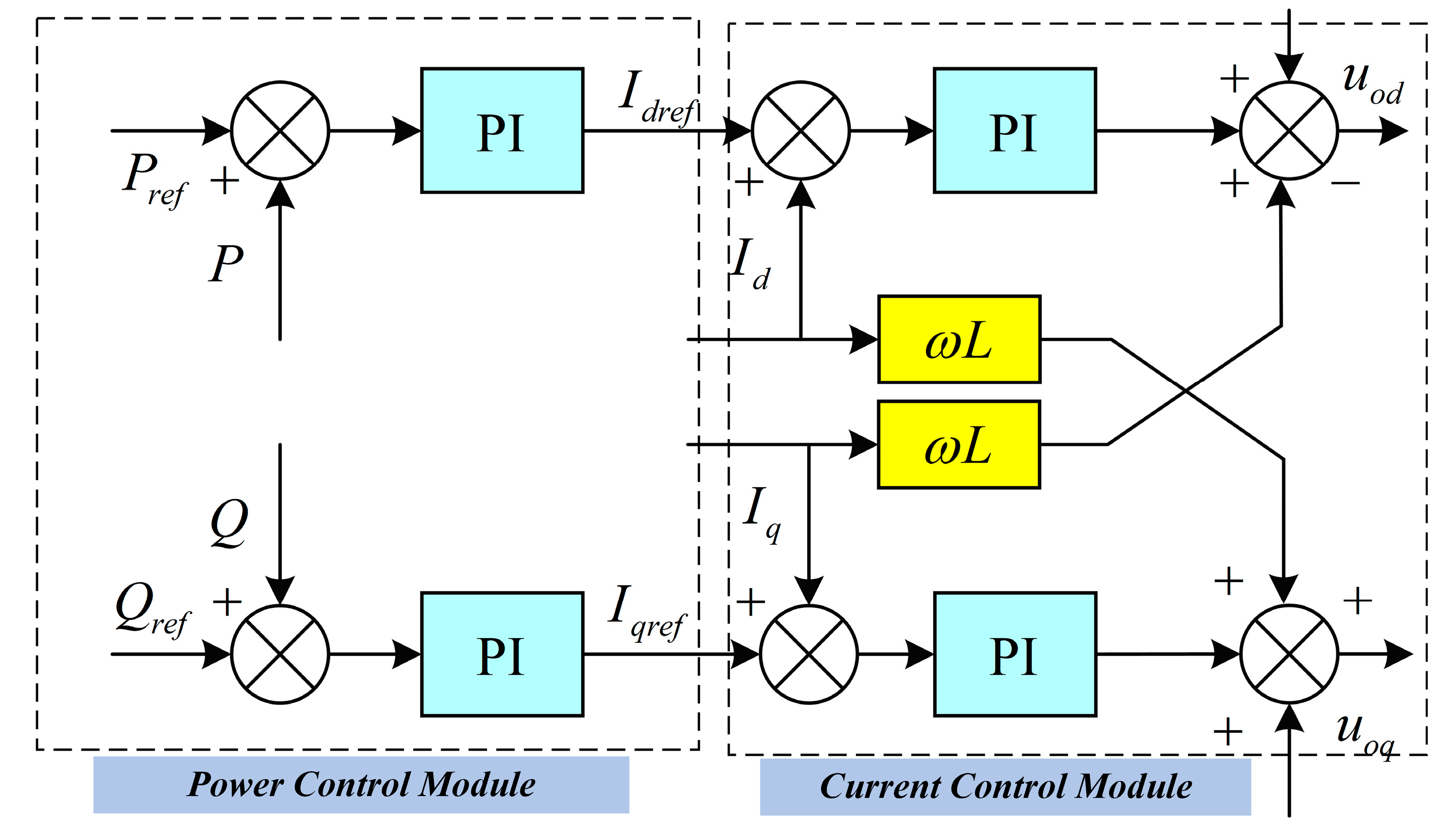
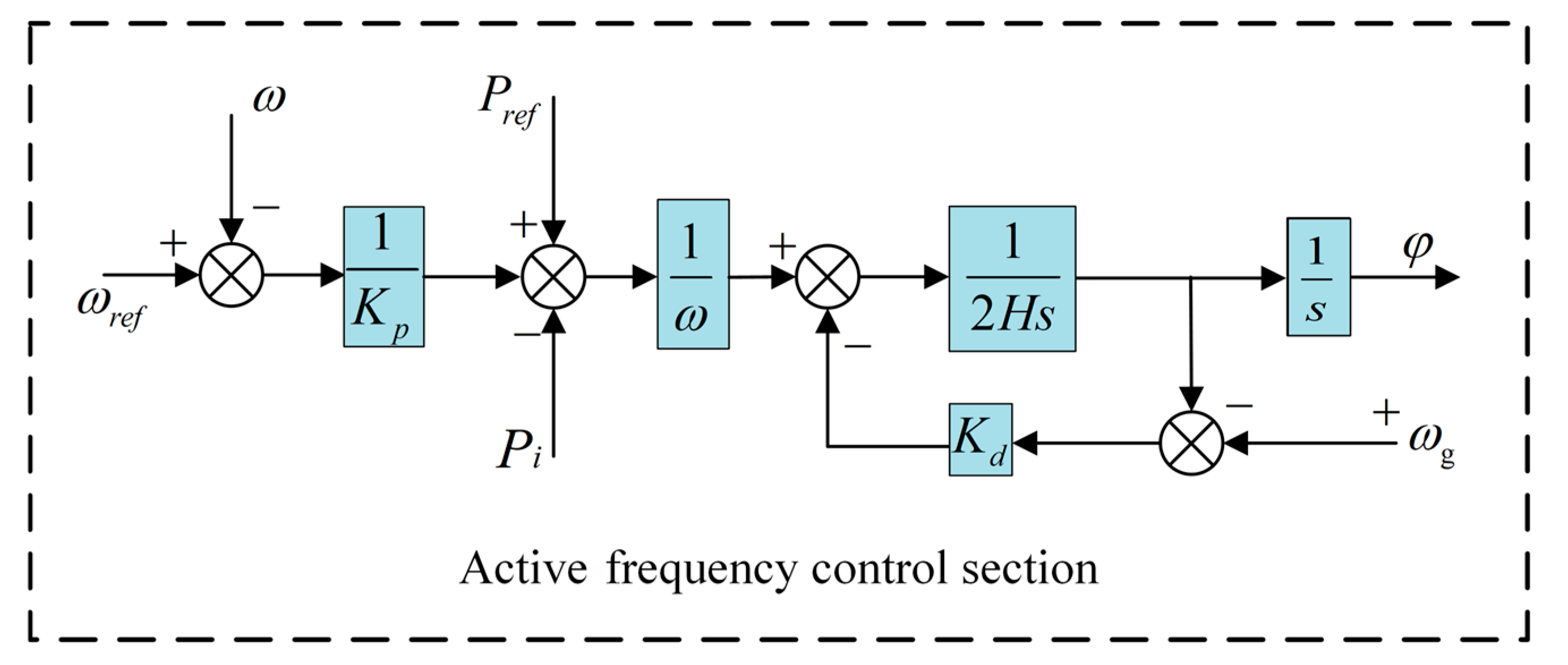

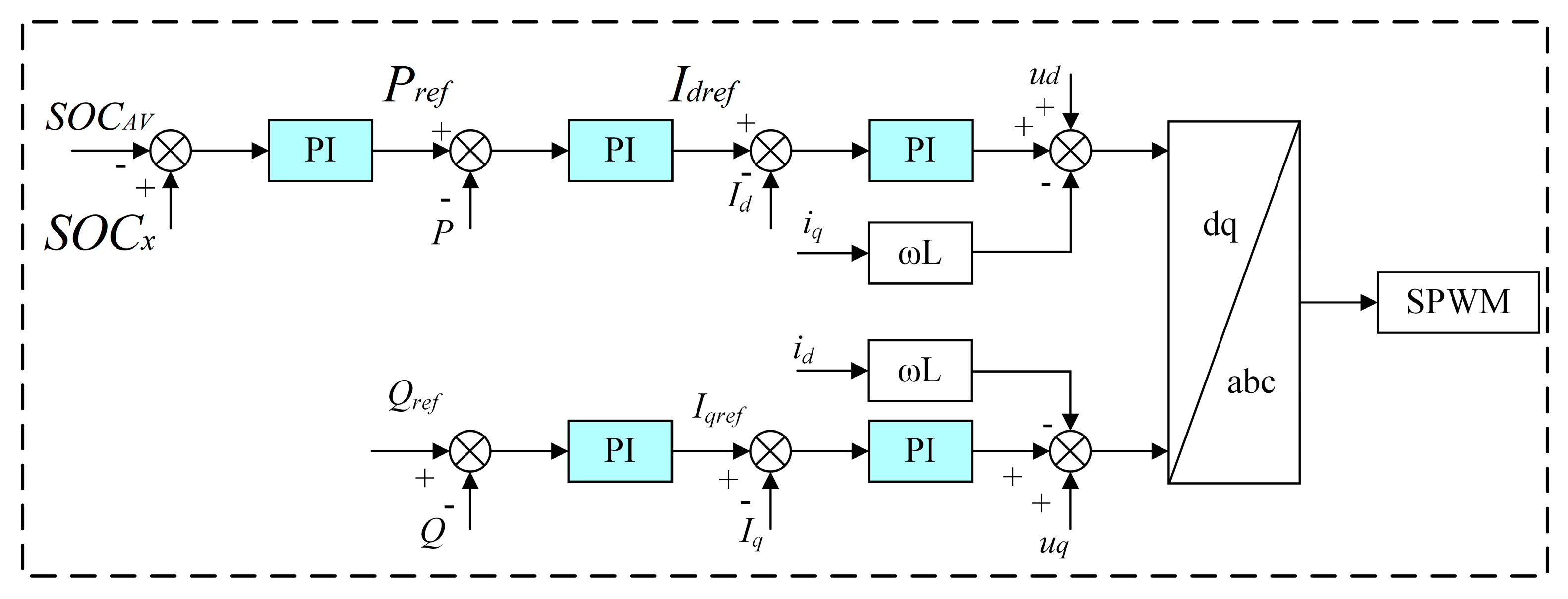



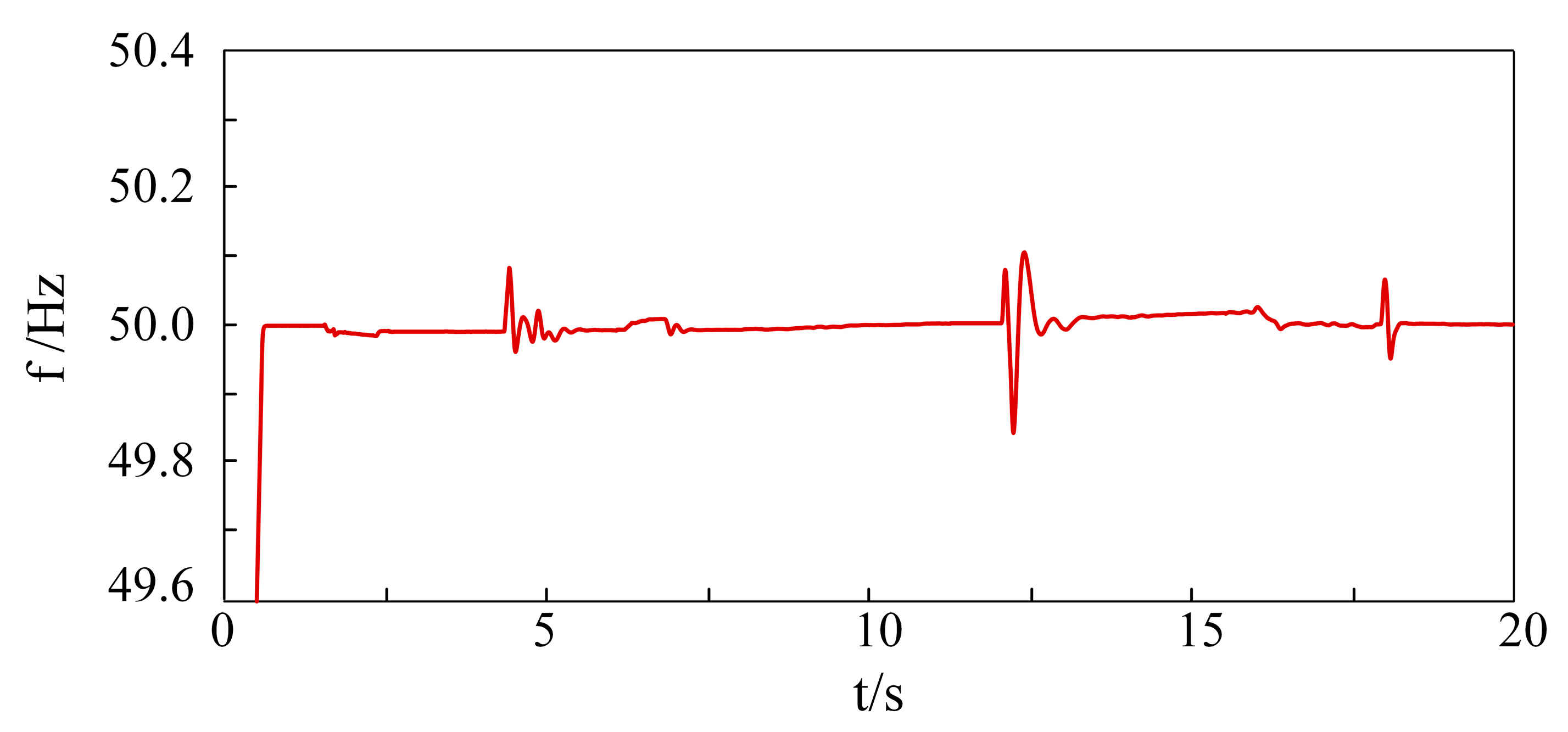
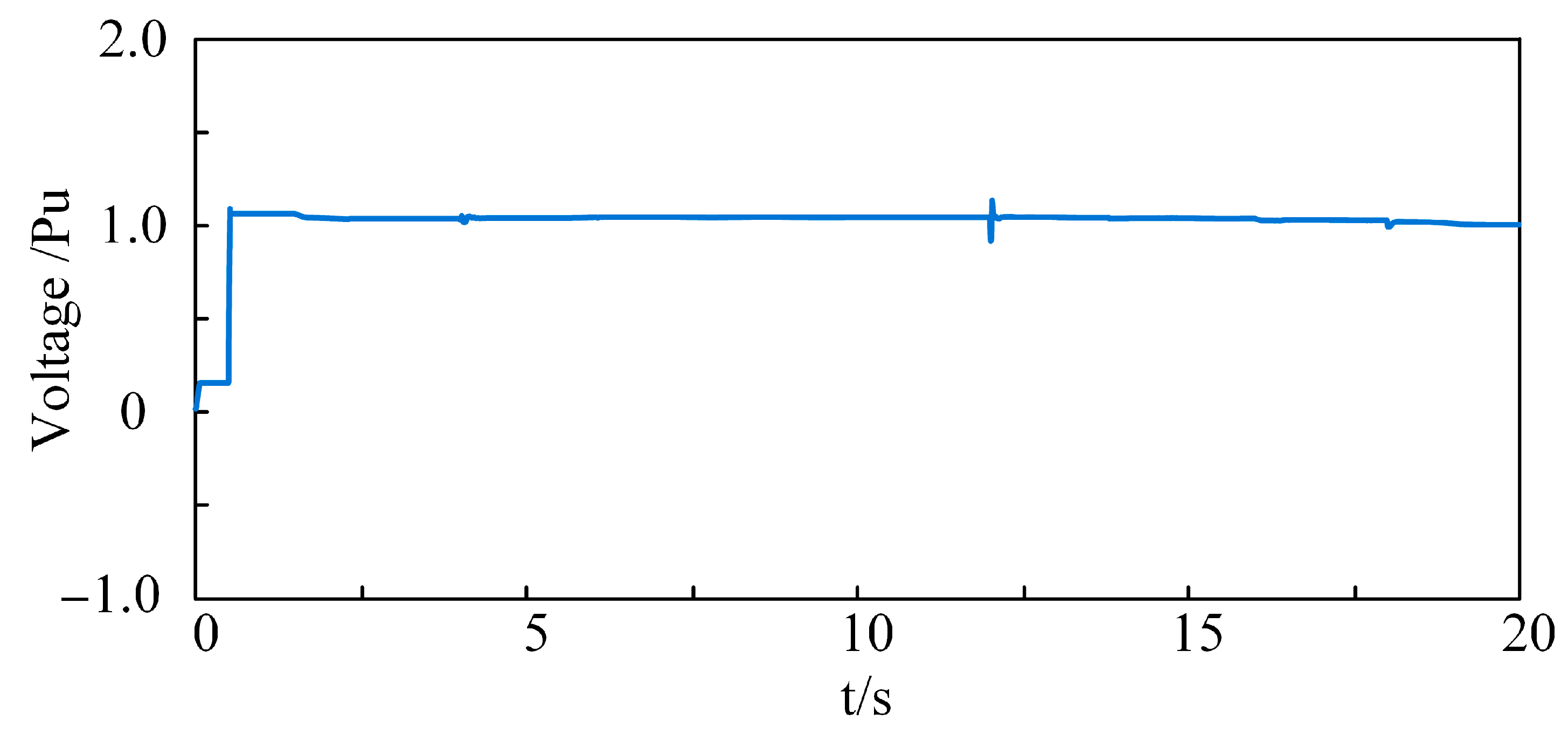
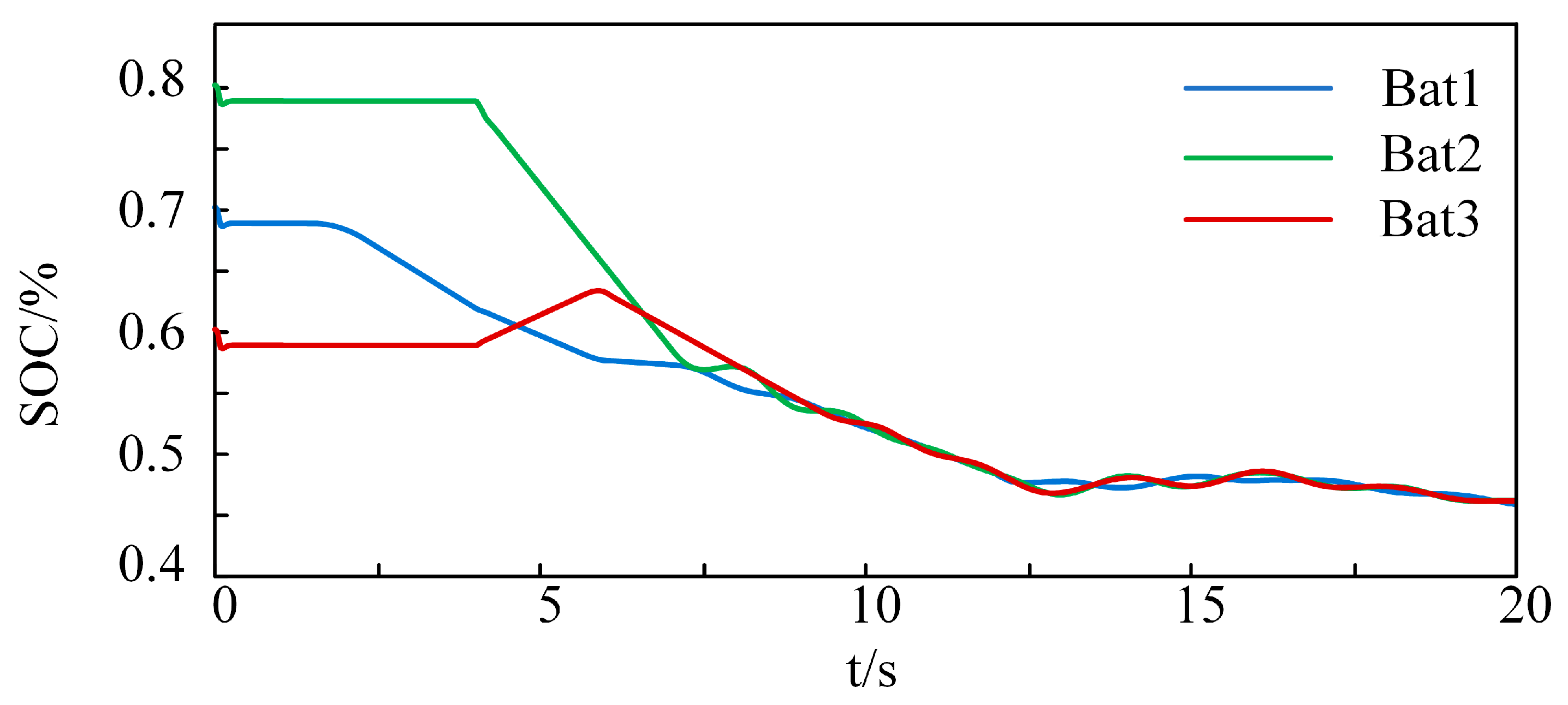

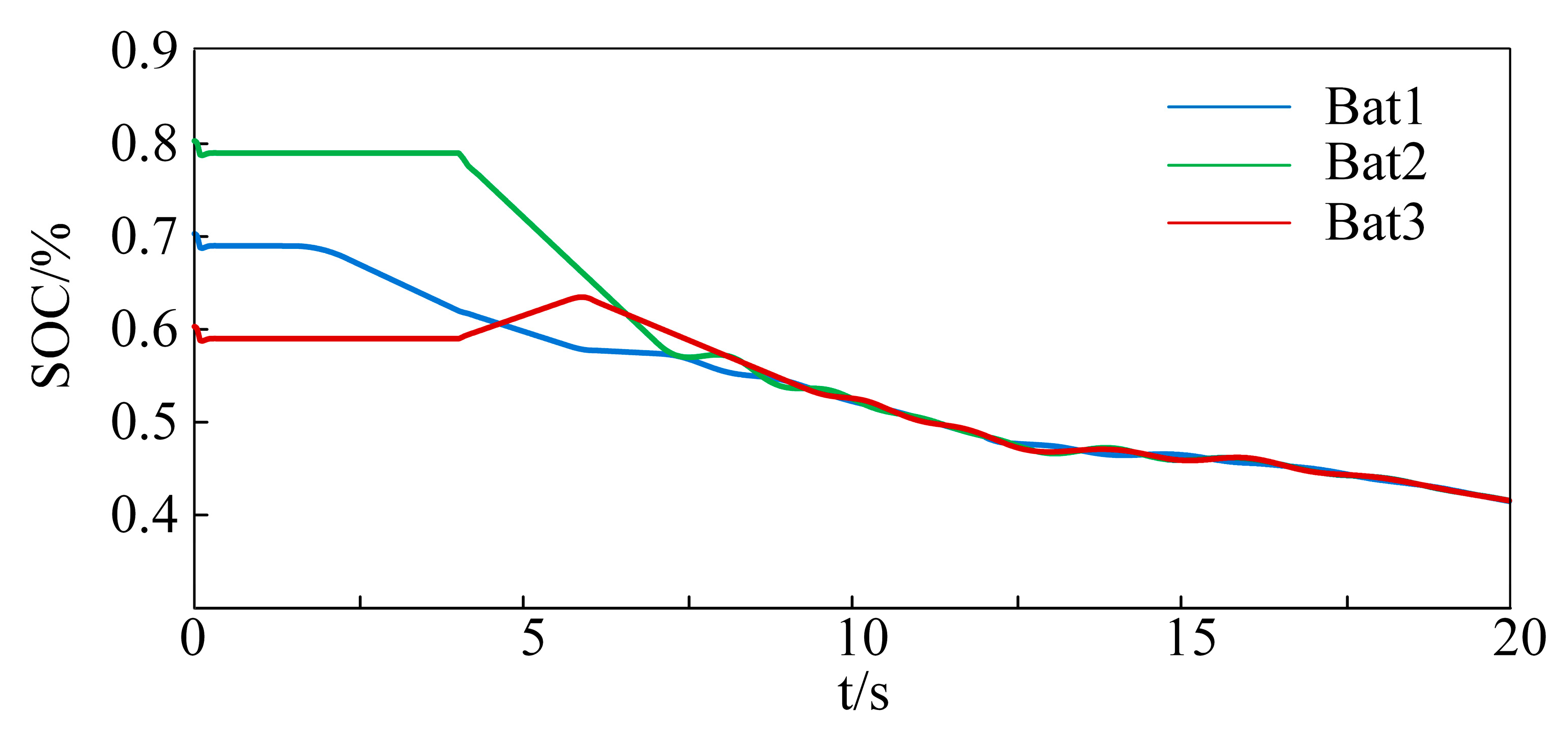
| Storage Unit Parameters | Values |
|---|---|
| Number of energy storage units | 3 |
| Rated voltage | 690 V |
| Power rating | 1 MW/0.5 MW/1 MW |
| Initial SOC | 70%/80%/60% |
| SOC protection cap | 80% |
| SOC protection lower limit | 20% |
| Photovoltaic System Parameters | Values |
|---|---|
| Number of photovoltaic units | 10 |
| Rated voltage | 690 V |
| Power rating | 0.2 MW |
| Maximum power point voltage | 1.5 KV |
| Factory Auxiliary Machine Parameters | Values |
|---|---|
| Power rating | 0.5 MW |
| Motor angular frequency | 314.1592 rads−1 |
| leakage | 2.07 H |
| Stator winding end inductance | 0.0052 H |
| Rotor winding end inductance | 0.41 H |
| Rated voltage | 6 KV |
| Feature | Traditional Methods | Methodology Proposed in This Study |
|---|---|---|
| Dynamic response | Usual | Fast |
| SOC management | Vulnerable to over-runs | SOC adaptive equalisation |
| Disturbance resistance | Limited impact resistance | High impact resistance |
| Economics | High cost | Low cost |
Disclaimer/Publisher’s Note: The statements, opinions and data contained in all publications are solely those of the individual author(s) and contributor(s) and not of MDPI and/or the editor(s). MDPI and/or the editor(s) disclaim responsibility for any injury to people or property resulting from any ideas, methods, instructions or products referred to in the content. |
© 2025 by the authors. Licensee MDPI, Basel, Switzerland. This article is an open access article distributed under the terms and conditions of the Creative Commons Attribution (CC BY) license (https://creativecommons.org/licenses/by/4.0/).
Share and Cite
Li, X.; Ma, T.; Zhang, Z.; Zhang, D.; Xu, Y.; Wang, K. A Black Start Recovery Strategy for a PV-Based Energy Storage Microgrid, Considering the State of Charge of Energy Storage. Electronics 2025, 14, 1696. https://doi.org/10.3390/electronics14091696
Li X, Ma T, Zhang Z, Zhang D, Xu Y, Wang K. A Black Start Recovery Strategy for a PV-Based Energy Storage Microgrid, Considering the State of Charge of Energy Storage. Electronics. 2025; 14(9):1696. https://doi.org/10.3390/electronics14091696
Chicago/Turabian StyleLi, Xiaoyu, Tianxiang Ma, Zhiyuan Zhang, Da Zhang, Yan Xu, and Kaichen Wang. 2025. "A Black Start Recovery Strategy for a PV-Based Energy Storage Microgrid, Considering the State of Charge of Energy Storage" Electronics 14, no. 9: 1696. https://doi.org/10.3390/electronics14091696
APA StyleLi, X., Ma, T., Zhang, Z., Zhang, D., Xu, Y., & Wang, K. (2025). A Black Start Recovery Strategy for a PV-Based Energy Storage Microgrid, Considering the State of Charge of Energy Storage. Electronics, 14(9), 1696. https://doi.org/10.3390/electronics14091696






